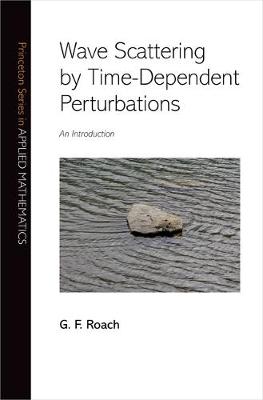Princeton Series in Applied Mathematics
3 total works
This book offers the first comprehensive introduction to wave scattering in nonstationary materials. G. F. Roach's aim is to provide an accessible, self-contained resource for newcomers to this important field of research that has applications across a broad range of areas, including radar, sonar, diagnostics in engineering and manufacturing, geophysical prospecting, and ultrasonic medicine such as sonograms. New methods in recent years have been developed to assess the structure and properties of materials and surfaces. When light, sound, or some other wave energy is directed at the material in question, "imperfections" in the resulting echo can reveal a tremendous amount of valuable diagnostic information. The mathematics behind such analysis is sophisticated and complex. However, while problems involving stationary materials are quite well understood, there is still much to learn about those in which the material is moving or changes over time. These so-called non-autonomous problems are the subject of this fascinating book.
Roach develops practical strategies, techniques, and solutions for mathematicians and applied scientists working in or seeking entry into the field of modern scattering theory and its applications. Wave Scattering by Time-Dependent Perturbations is destined to become a classic in this rapidly evolving area of inquiry
Roach develops practical strategies, techniques, and solutions for mathematicians and applied scientists working in or seeking entry into the field of modern scattering theory and its applications. Wave Scattering by Time-Dependent Perturbations is destined to become a classic in this rapidly evolving area of inquiry
Mathematical Analysis of Deterministic and Stochastic Problems in Complex Media Electromagnetics
by G. F. Roach, I. G. Stratis, and A. N. Yannacopoulos
Published 1 January 2012
Electromagnetic complex media are artificial materials that affect the propagation of electromagnetic waves in surprising ways not usually seen in nature. Because of their wide range of important applications, these materials have been intensely studied over the past twenty-five years, mainly from the perspectives of physics and engineering. But a body of rigorous mathematical theory has also gradually developed, and this is the first book to present that theory. Designed for researchers and advanced graduate students in applied mathematics, electrical engineering, and physics, this book introduces the electromagnetics of complex media through a systematic, state-of-the-art account of their mathematical theory. The book combines the study of well posedness, homogenization, and controllability of Maxwell equations complemented with constitutive relations describing complex media. The book treats deterministic and stochastic problems both in the frequency and time domains. It also covers computational aspects and scattering problems, among other important topics.
Detailed appendices make the book self-contained in terms of mathematical prerequisites, and accessible to engineers and physicists as well as mathematicians.
Detailed appendices make the book self-contained in terms of mathematical prerequisites, and accessible to engineers and physicists as well as mathematicians.
Wave Scattering by Time-Dependent Perturbations: An Introduction
by G. F. Roach
Published 1 January 2009


